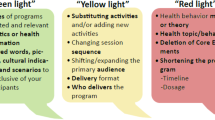Abstract
Despite substantial contributions on the part of public, non-profit, and private sector organizations, the burden of cancer in the United States remains high. As public health organizations, particularly county, state, tribal, and territorial health departments, try to reduce the significant burden of cancer, they face additional issues that make it difficult to address cancer in a comprehensive way. These challenges along with the need to accelerate progress in reducing the U.S. cancer burden, prompted the Centers for Disease Control and Prevention (CDC) and its national partners to begin to work together to further define and describe comprehensive cancer control (CCC) as an approach to reducing the burden of cancer. CCC is defined as “an integrated and coordinated approach to reducing cancer incidence, morbidity, and mortality through prevention, early detection, treatment, rehabilitation, and palliation.” This article describes the national effort to support comprehensive cancer control, outlines national and state level success in comprehensive cancer control, and provides a call to action to public, private, and non-profit organizations, governments of all levels, and individuals to renew their commitments to reducing the burden of cancer.
Similar content being viewed by others
References
Public Law 92–218, 92nd Congress, S-1828, December 23.1971 (http://www3.cancer.gov/legis/1971canc.html; http://rex.nci.nih.gov/massmedia/CANCER_RES RCH_WEBSITE/1971.html).
R Doll R Peto (1981) ArticleTitleThe causes of cancer: Quantitative estimates of avoidable risks of cancer in the United States today JNCI 66 1191–1308 Occurrence Handle7017215
http://www.cdc.gov/tobacco/sgr/sgr_1964/1964%20SGR%20 Intro.pdf.
InstitutionalAuthorNameAmerican Cancer Society (2005) Cancer Facts and Figures 2005 American Cancer Society Atlanta
SJ Curry T Byers M Hewitt (Eds) (2003) Fulfilling the Potential of Cancer Prevention and Early Detection National Cancer Policy Board Washington D.C. 1
J Abed B Reilley MO Butler T Kean F Wong K Hohman (2000) ArticleTitleComprehensive cancer control initiative of the centers for disease control and prevention: an example of participatory innovation diffusion J Publ Health Manag Pract 6 IssueID2 79
InstitutionalAuthorNamePublic Health Service (1983) ArticleTitlePublic Health Service implementation plans for attaining the objectives for the Nation Publ Health Rep 98 IssueIDsuppl 1–178
Cancer Control Objectives for the Nation: 1985–2000 In: Greenwald P, Sondik EJ, (eds). NCI Monographs, Number 2, 1986.
RM Goodman A Steckler MH Alciati (1997) ArticleTitleThe impact of the National Cancer Institute’s data-based intervention research program on state health agencies Health Educ Res 12 IssueID2 199–211 Occurrence Handle10168573
National Cancer Institute. Community-based Interventions for Smokers: The COMMIT Field Experience. Smoking, Tobacco Control Monograph No.6. Bethesda MD: U.S. Department of Health and Human Services, NIH, NCI. NIH Pub. No. 95–4028. August 1995.
National Cancer Institute. ASSIST: Shaping the Future of Tobacco Prevention and Control. Tobacco Control Mongraph No. 16 Bethesda, MD: U.S. Department of Health and Human Services, NIH, NCI. NIH Pub. No. 05–5645, May 2005.
Potter JD, Finnegan JR, Guinard JX, et al. 5 A Day for Better Health Program Evaluation Report. Bethesda, MD: U.S. Department of Health and Human Services, NIH, NCI. NIH Pub. No.01–4904. November 2001.
AD Kaluzny LM Lacey R Warnecke JP Morrissey E Sondik L. Ford (1994) ArticleTitleUsing a community cancer treatment trials network for cancer prevention and control research: challenges and opportunities Cancer Epidemiol Biomarkers Prev 3 IssueID3 261–269 Occurrence Handle8019377
J Abed B Reilley MO Butler T Kean F Wong K Hohman (2000) ArticleTitleDeveloping a framework for comprehensive cancer prevention and control in the United States: an initiative of the Centers for Disease Control and Prevention J Public Health Manag Pract 6 IssueID2 67–78
Butler MO, Abed J, Hare ML, Orians C, Rose, JM. Essential Elements for Developing/Expanding Comprehensive Cancer Control Programs: Design Options for State Health Agncies. Prepared for CDC, Division of Cancer Prevention and Control by Battelle CPHRE. May 1999. (http://www.cdc.gov/cancer/ncccp/elements/index.htm).
InstitutionalAuthorNameCDC (2002) Guidance for Comprehensive Cancer Control Planning Department of Health and Human Services Atlanta, GA
Lasker, R, Weiss, E, Miller, R (2001) Partnership synergy: a practical framework for studying and strengthening the collaborative advantage. The Milbank Quarter, 79 (2).
P DiMaggio W Powell (1983) ArticleTitleThe iron cage revisited: institutional isomorphism and collective rationality in organizational fields Am Sociol Rev 48 147–160
InstitutionalAuthorNameHarvard Center for Cancer Prevention (1997) ArticleTitleSummary Cancer Causes Control 8 IssueIDsuppl 1 S50
Lance Armstrong Foundation and the Centers for Disease Control and Prevention (2004) A National Action Plan for Cancer Survivorship: Advancing Public Health Strategies. Available from: http://www.cdc.gov/cancer/survivorship/overview.htm.
Washington State Comprehensive Cancer Control Plan, 2004–2008. Olympia, WA: Washington Comprehensive Cancer Control Partnership, January 2004. Available from: URL: http://www.doh.wa.gov/ccc.
Harris JR, Brown PK, Coughlin S, et al. The Cancer Prevention and Control Research Network. Prev Chronic Dis [serial online] 2005 Jan [date cited]. Available from: URL: http://www.cdc.gov/pcd/issues/2005/jan/04_0059.htm.
CN Klabunde PS Frame A Meadow E Jones M Nadel SW Vernon (2003) ArticleTitleA national survey of primary care physicians’ colorectal cancer screening recommendations and practices Prev Med 36 IssueID3 352–362 Occurrence Handle10.1016/S0091-7435(02)00066-X Occurrence Handle12634026
Author information
Authors and Affiliations
Corresponding author
Additional information
Leslie S. Given, Bruce Black-The findings and conclusions in this report are those of the authors and do not necessarily represent the views of the Centers for Disease Control and Prevention.
Rights and permissions
About this article
Cite this article
Given, L.S., Black, B., Lowry, G. et al. Collaborating to Conquer Cancer: A Comprehensive Approach to Cancer Control. Cancer Causes Control 16 (Suppl 1), 3–14 (2005). https://doi.org/10.1007/s10552-005-0499-8
Received:
Accepted:
Issue Date:
DOI: https://doi.org/10.1007/s10552-005-0499-8




